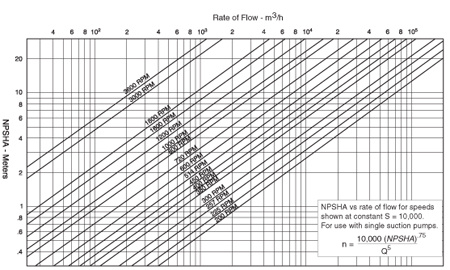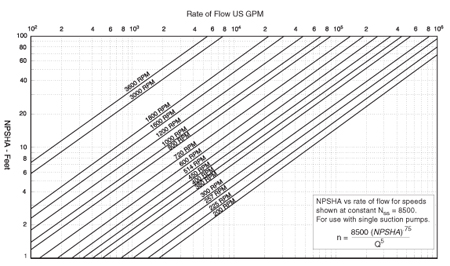Q. How can we tell if a pumping system is designed and operated properly? Some problems such as leaking seals are obvious, but should we watch for any other symptoms?A. A few symptoms in pumping systems often exist when there is improper sizing, selection, operation or other issues that result in less-than-optimal performance. These symptoms include:
- Systems in which valves are throttled to regulate flow rate, level, pressure, etc.
- Systems that employ bypass (recirculation) flow regulation
- Systems that involve a batch-type process, but one or more pumps operate continuously
- Frequent on/off cycling of a pump in a continuous process
- Presence of cavitation noise either at the pump or elsewhere in the system
- An equipment procurement policy based solely on lowest bid price
- A multiple parallel pump system in which the same number of pumps are always in operation
- A pumping system that has undergone a change in function (for example, a system that formerly provided cooling water to eight plant heat exchangers, two of which are no longer in service), but with no change in pump equipment or operation
- A pumping system with no flow, pressure or power indication (akin to driving a car with no speedometer, gas gauge or other critical indicators)
The existence of any one of these symptoms does not guarantee significant savings potential, but it indicates a greater likelihood of achieving savings. The more symptoms present, the greater the likelihood of potential energy savings.
More information like this can be found in Optimizing Pumping Systems.
Q. Higher pump speed usually results in lower pump cost and higher efficiency. How can I determine the maximum practical speed for any given application?
A. Maximum pump speed is frequently limited by the amount of NPSH available to the pump. Experience has shown that in many situations a suction specific speed "S (NSS)" of 10,000 (8,500) with flow in cubic meters per hour (gallons per minute) is a reasonable value for most impellers. Based on this premise, the chart in Figure 1.55 shows the maximum allowable speed for single suction impellers. For double suction impellers, use one half the rate of flow for the pump to calculate the suction specific speed.
Figure 1.55. Recommended typical operating speed limits for single suction pumps (metric) [top] and recommended typical operating speed limits for single suction pumps (U.S. units) [bottom]

Suction specific speed is a characteristic of a pump that is determined by this equation:
S = nQ0.5/NPSHR0.75
Where:
S = Suction specific speed
n = Speed of pump in RPM
Q = Total pump rate of flow in cubic meters per hour (GPM) for single suction impellers and one-half total pump flow for double suction impellers
NPSHR = Net positive suction head required in meters (feet)
If we solve for n, substitute 10,000 (8,500) for (NSS) and NPSHA for NPSHR, we get:
n = 10,000 (8,500) NPSHA0.75/Q0.5
This is the recommended maximum speed for the rate of flow and NPSH available to the pump. Figure 1.55 is a graphical summary of this equation for a wide range of flow and NPSH values.
Q. With so much emphasis on power savings, how can we select pumps with reasonably high efficiency?
A. A review of a wide range of pump catalogs shows that pumps designed for a pump specific speed ns (NS) of between 2,000 (1,720) and 5,000 (4,300) with flow in cubic meters per hour (gallons per minute) will usually provide the highest efficiency. Pumps designed for lower or higher specific speed will suffer a reduction in efficiency.
Pump specific speed is determined as follows:
nS = nQ0.5/H0.75
Where:
nS = Specific speed
n = Speed of pump in RPM
Q = Total pump rate of flow in cubic meters per hour (GPM) for both single suction and double suction pumps
H = Pump total head in meters (feet)
Other factors that affect pump efficiency are as follows, beginning with the most efficient:
- Size as measured by rate of flow
- Double suction impellers
- Single suction impellers
- Stainless steel impellers with extra wearing ring clearance
- Non-clog sewage impellers
- Slurry pump impellers
Impeller surface finish is important and must be carefully maintained. Avoid impellers designed for high suction specific speed values and impellers that are trimmed below about 85 percent of the pump's maximum diameter impeller.
Pumps & Systems, March 2009

